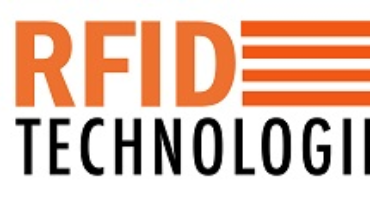How RFID UHF RAIN Works:
RFID Reader sends out UHF radio waves to activate and communicate with RFID tags.
RAIN RFID Tags receive the signal and transmit back their unique ID and stored data.
RFID Software processes the information, enabling asset tracking, inventory management, and security applications.
Advantages of RAIN RFID:
Longer Read Range – Can read tags from up to 10–15 meters (30–50 feet).
High-Speed Reading – Can scan hundreds of tags per second.
Low Cost & Scalability – Passive UHF RFID tags are inexpensive and ideal for large-scale tracking.
Global Standard – Uses open standards (EPC Gen2) for interoperability across industries.
Common Uses & Applications:
Supply Chain & Logistics – Tracks shipments and inventory in warehouses and retail.
Retail & Inventory Management – Automates stock tracking and reduces shrinkage.
Healthcare – Identifies medical equipment, patients, and pharmaceuticals.
Access Control & Security – Used in ID badges for personnel tracking and secure entry.
Manufacturing – Enables real-time visibility of production processes.
RAIN RFID is widely adopted for its high performance, automation capabilities, and cost-effectiveness. Would you like recommendations on RFID hardware or implementation strategies?
RFID (Radio Frequency Identification) is a technology that uses radio waves to automatically identify and track assets or people. It consists of three main components:
RFID Tags – These are small electronic devices containing a microchip and an antenna. They store information about the asset or person and can be either passive (powered by the reader’s signal) or active (battery-powered for longer range tracking).
RFID Readers – These devices send out radio signals to detect and read information from RFID tags. They can be fixed (installed in specific locations) or mobile (handheld for scanning items on the go).
RFID Software & Database – The collected data is processed and managed by specialized software, often integrated with asset management, inventory, or security systems.
How UHF RFID RAIN Technology Works:
The RFID UHF reader emits a radio frequency signal.
When an RFID UHF label tags enters the signal range, it responds by transmitting its stored data.
The UHF RFD readers capture the data and sends it to a computer system for processing and tracking.
Applications of RFID:
Inventory Management – Retailers and warehouses use RFID to track stock in real-time.
Access Control – Used in security badges for restricted areas.
Asset Tracking – Companies track valuable equipment, vehicles, and shipments.
Healthcare – Hospitals use RFID for patient identification and medical equipment tracking.
Supply Chain Management – Ensures accurate tracking of goods throughout the supply chain.
UHF RFID technology improves efficiency, reduces human error, and enhances security, making it a valuable tool across various industries. Do you need details on a specific RFID use case?
UHF RFID (Radio Frequency Identification) is a technology that uses radio waves to automatically identify and track objects or people.
UHF RFID tags and Labels : These are small devices that contain a microchip and an UHF RFID antenna.
They store information, such as an identification number, about the object or person they are attached to.
RFID readers: These devices emit radio waves and receive signals back from the RFID tags.
They can read the information stored on the tags and transmit it to a computer system.
Types of RFID tags:
Passive tags: These tags do not have their own power source. They are powered by the radio waves from the reader. Active tags: These tags have their own power source, such as a battery. They can transmit signals over longer distances than passive tags.
Applications of RFID technology:
RFID technology is used in a wide variety of applications, including:
Supply chain management: Tracking inventory, managing logistics, and preventing counterfeiting.
Retail: Tracking products, managing inventory, and providing personalized customer experiences.
Healthcare: Tracking medical equipment, managing patient records, and preventing medication errors.
Logistices & Transportation: Tracking vehicles, managing toll payments, and improving traffic flow.
Security: Access control, identity verification, and anti-theft systems.
Benefits of RFID technology:
Increased efficiency: RFID can automate many tasks, such as inventory management and tracking.
Improved accuracy: RFID can reduce errors associated with manual data entry.
Enhanced security: RFID can be used to track and monitor objects or people, which can help to prevent theft and improve security.
Reduced costs: RFID can help to reduce costs associated with labor, inventory management, and waste.
Challenges of RFID technology:
Cost: RFID tags and readers can be expensive, especially for large-scale deployments.
Complexity: Implementing an RFID system can be complex, requiring careful planning and integration with existing systems.
Privacy: There are concerns about the privacy implications of RFID technology, as it can be used to track people and objects without their knowledge or consent.
Overall, RFID is a powerful technology that has the potential to transform many industries.
However, it is important to be aware of the challenges associated with RFID technology before implementing it.

